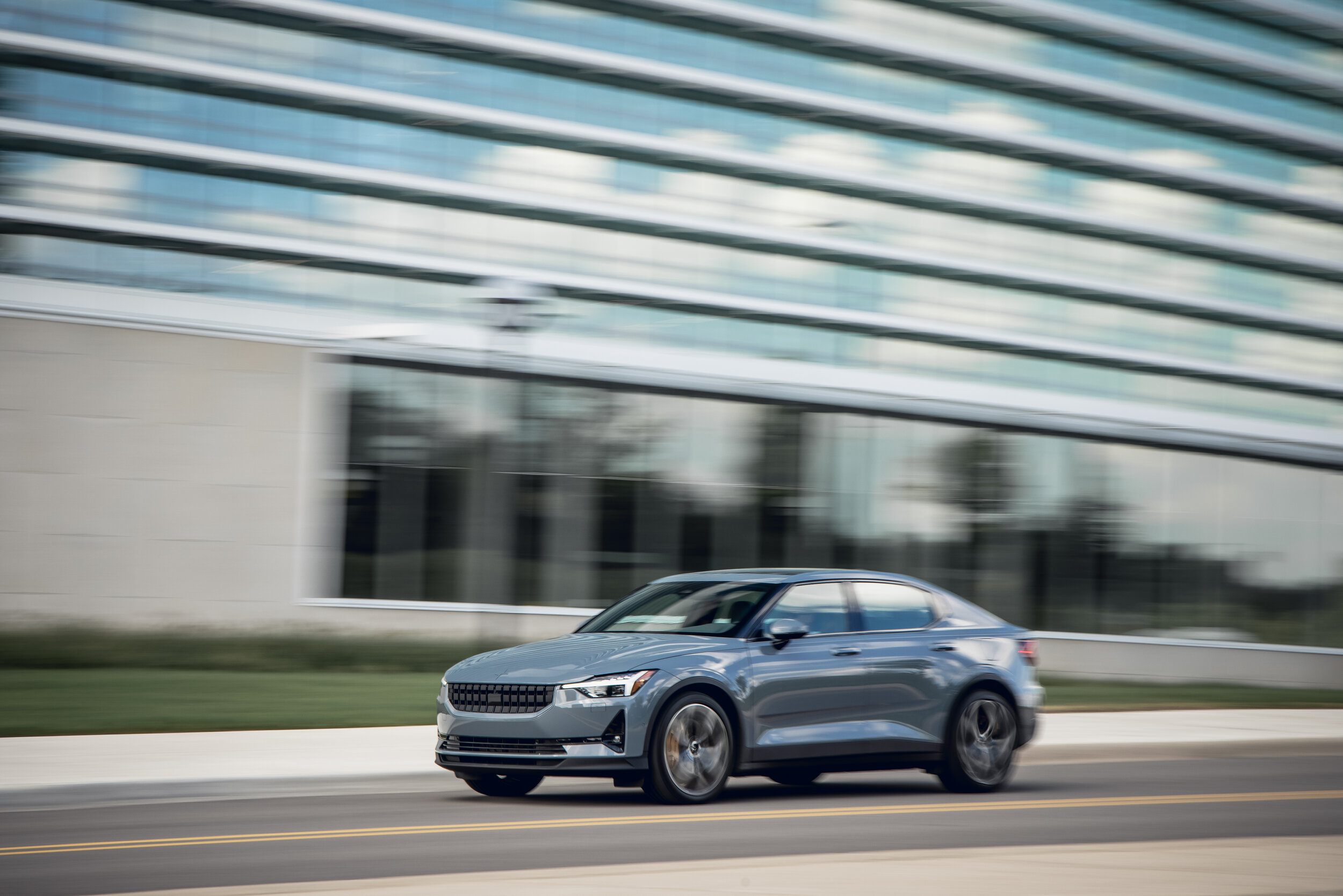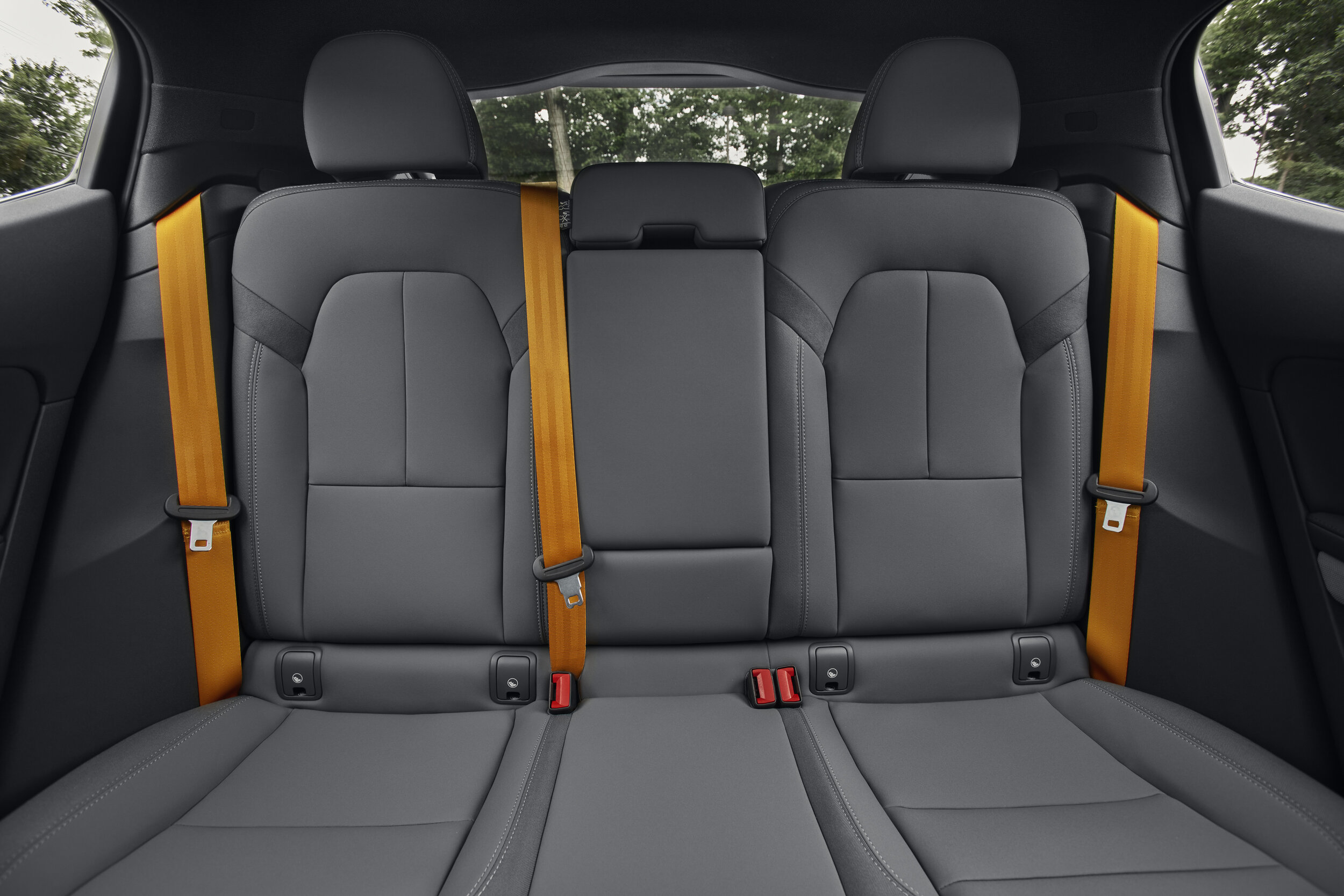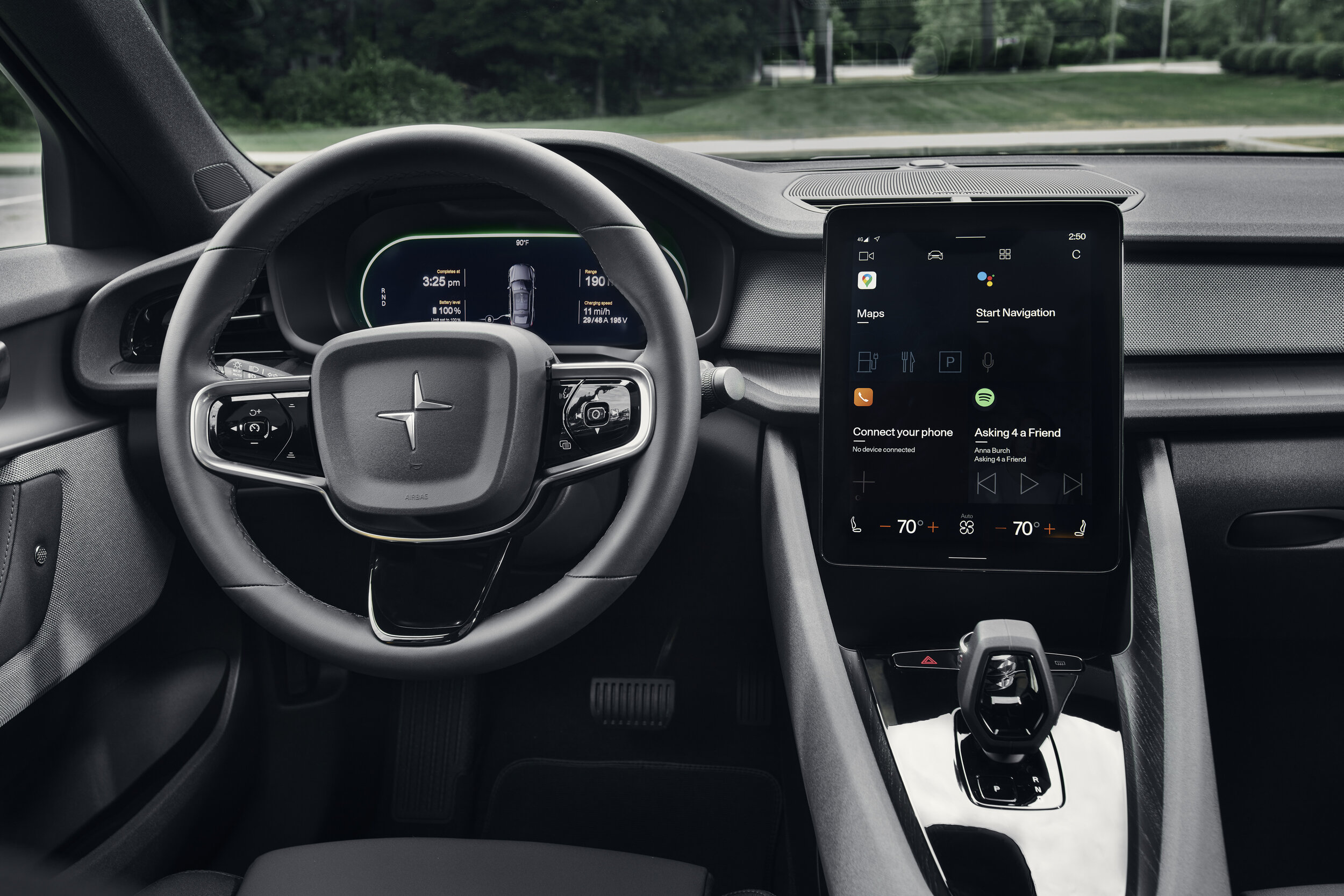First Drive: Polestar 2
Volvo’s Electrified Sibling Brand
“Hey Google, take me to Hell.” I promise, I wasn’t trying to be ironic. I was driving the Polestar 2 for the very first time, the first car to use Google’s Android Automotive system. It’s one of the talking points on the latest electric vehicle to come to market.
It was my first swing at the Android system. The system rushed to respond to my directive, showing of its artificial intelligent empathy. “I”m sorry you feel that way,” it said in reply.
I had a couple hours on the road to get a first impression of this brand new model in the surrounding area. I clarified my request; I wasn’t trying to be funny. “Hey Google, take me to Hell, Michigan.” Hell was my actual destination, and one that seemed well suited for the timing of my drive this August in the Ypsilanti college town. The voice system understood me and obliged with clear directions on the touch screen. I buckled up my bright, cheery yellow seat belt and Polestar 2 and I were off.
The Polestar 2 was my first organized test drive in months, my attempt to participate in automotive journalism in the midst of the pandemic era. Despite the extenuating circumstances of a world in tumult, the show must go on, and so Polestar enters the market at a curious time. Maybe that makes it the perfect time to add something new and original to the growing electric vehicle market.
The extremely Scandinavian automaker Volvo and Polestar share a common owner and many of the same innerworkings. For enthusiasts, the name may ring a bell as a carryover from Volvo’s performance brand, but this brand is more geared toward the company’s electric future. Marketing materials described that identity as a “pure, performance, electrified brand.”
Volvo has spent 93 years building a name that conjures up its Swedish brand identity, rivaled only by Ikea’s blue and yellow branding. It’s a little known fact among American customers that Volvo is now owned by Chinese car multi-conglomerate Geely. Name recognition is the name of the game in auto brand loyalty. Polestar has a long road ahead as the newest contender to launch a fully electric vehicle in the U.S.
Polestar has been teasing its electric proposition for three years, since it announced launch plans in Shanghai in 2017. To make a first impression, it first offered the snazzy souped-up Polestar 1 last year, making only 500 cars a year. Its already sold out for 2020, its last year slated for production. For phase two of the launch plan is the Polestar 2, a sedan designed to go toe-to-toe with the Tesla Model 3.
Before I drove I attended a masked presentation held in an Ypsilanti open-air garage. “Volvo is safety, family, warm and understated Scandinavian luxury,” the spokesman told our socially distanced group of journalists. In contrast, Polestar claims to be pure and minimalistic, high tech and exclusive, sustainable and progressive, cool tech and performance-centric.
Getting that word out and getting people into its showroom is Polestar’s first hurdle. Its got some structural support from Volvo that helps with access to parts and car dealers. But it’s no small feat to launch a new car brand — many more brands have failed than succeeded. (RIP Fisker, Saab, Mercury and Plymouth.)
Going all-electric is another challenge Polestar has ahead. Our US infrastructure means that all-electric isn’t a viable option for everyone. The first requirement is access to a reliable charging station, which ideally is a private garage. Eventually, EV ownership will get easier, but like everything else in 2020, there’s no telling exactly when. Polestar has not yet announced a formal partnership with a charging station network to boost access.
But despite all of present-day challenges, the cars are coming, so I decided to take the risk and venture out my bubble to drive it. From the outside, it has a familiar shape -- a sloping body that seems relatable to others on the road. The panoramic roof accentuates its eggs shaped surface area, a study in neutrality.
The interior is where the Polestar shines. Vegan seats made from recyclable materials have a fresh, modern look, and there’s just enough accent to make it feel cohesive. It’s oblong shape is spacious, and feels roomy for passengers. Touchpoints are crisp and the screens feel as if they belong in the dash.
Polestar delivers on its brand promise to frontload connected car tech integrations. Its big story is early access to the Google Android Operating System before big players take it on. Like Tesla, it will run over-the-air updates on its software. It factors in real-time hazard data and has the safety benefits of Volvo’s level 2 autonomy system Pilot. Owners can opt-in for a 3 year AT&T subscription, or choose to keep their phone integrations independent of Google. Its equipped for Apple CarPlay/ Android Auto as a secondary nav option. Common automotive luxury tech includes wireless charging, voice control, and a digital key. It’s got Harmon Kardon 13 speakers, swathed in fabric, and four USB outlets.
I zipped out of the parking lot. It’s faster than its looks suggest, reaching 60 miles per hour in 4.1 seconds.
It boasts a claimed range of 291 miles, which is less than a Tesla, but enough for daily commuting. My trip was far less than that, but range seemed to hold steady. It’s winter-ready with all-wheel drive.
The fully-loaded version is priced at $59,900. Trim $7500 off for the federal tax incentive and $2000 for state. Polestar keeps options simple, offering six exterior colors and three different interiors. It offers a $5000 performance pack for racier customers.
Since it announced plans to launch much has changed about the way Polestar intends to sell cars. Its pivoted from a subscription service to a pickup and delivery model using a more traditional dealer center, or consumers can opt to order it online, and have it delivered by their selected dealers. In its current phase centers are open in New York City, Los Angeles, and San Francisco.
When the Tesla Model 3 came out, orders flooded the system. Tesla had its intrinsic shine going for it, and several models under its belts, and waited many months for delivery. Polestar 2 can be ordered online and delivered to customers by fourth quarter. For early adopters, this EV has a fresh-faced advantage and Polestar finds its place in the automotive constellation.



